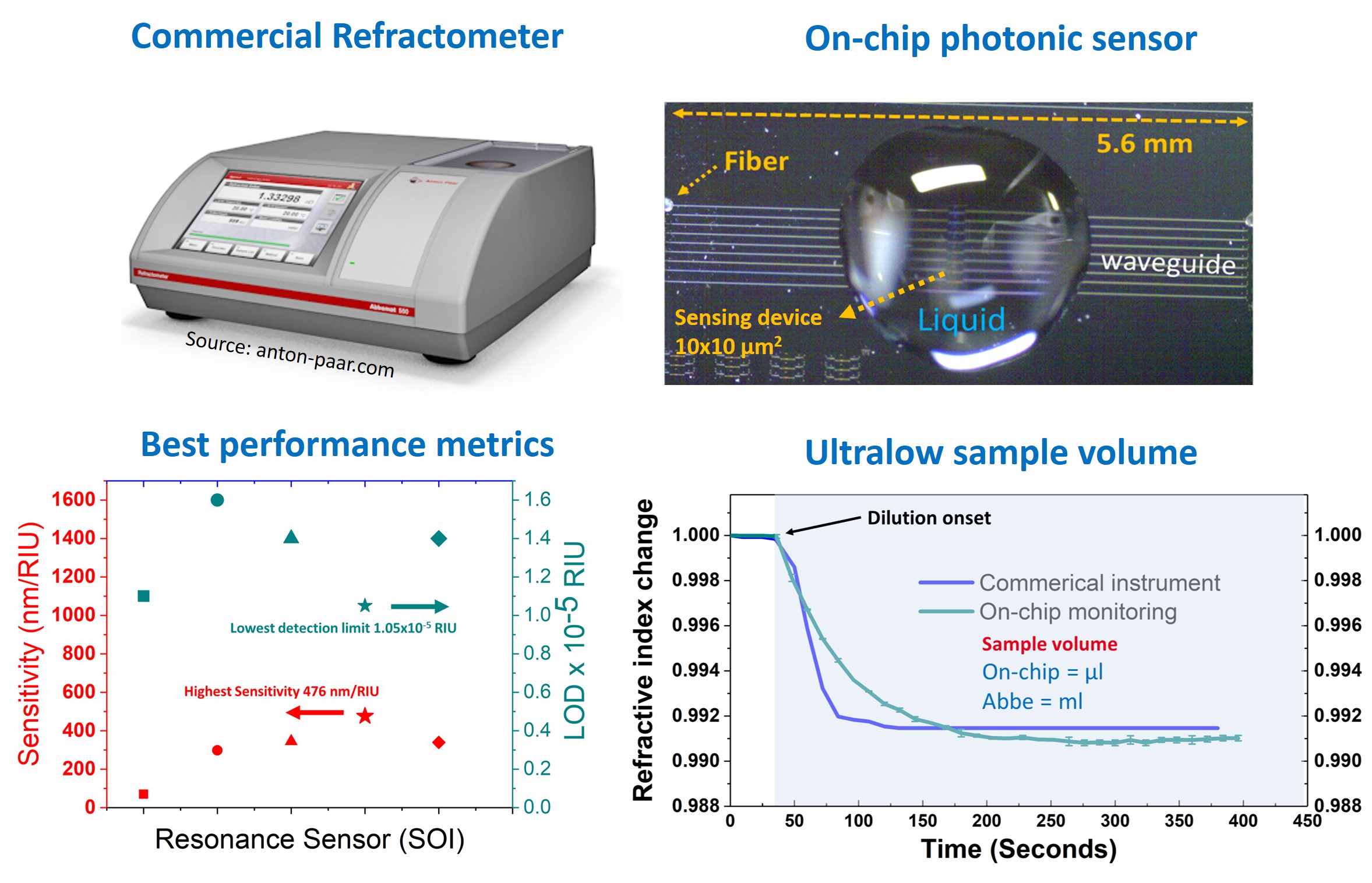Photonic integrated circuit sensor measures chemical changes in microliter volume
Optical sensors use light-matter interaction to help us understand the world around us. A specific area of interest is probing chemical reactions. But probing very small volumes of chemicals is still a challenge due to the very low volume of light-matter interaction and poor signal-to-noise ratio. Commercial optical sensors are also bulky, immobile, expensive and time-consuming.

Photonic integrated circuits offer a platform to miniaturise optical sensors. Like electronic circuits, various functionalities can be integrated on a single chip. Photonic circuits enable sub-wavelength confinement of light in micrometre scale volume in a photonic waveguide. However, only 10 percent of light is available for interacting with the environment, which limits the sensing ability.
An IISc team led by Shankar Kumar Selvaraja, Associate Professor at CeNSE, along with his PhD student Viphretuo Mere, has developed a compact on-chip optical sensor based on a slot-waveguide that increases light-interaction volume to 50 percent. They showed a record six times higher sensitivity improvement to small environmental changes.
In collaboration with Shell India, the team was able to demonstrate an on-chip chemical reaction at the nano scale, and detect changes in chemical concentrations in a microliter sample by measuring changes in optical density or refractive index. On-chip measurements require much smaller volume compared to commercial refractometers without loss of accuracy.
Such sensors can help probe chemical reactions that were earlier impossible to track using conventional techniques. They can also beeasily manufactured on a large scale using microelectronics fabrication tools. The team is also exploring ways to detect low volumes of biomarkers and pathogens.
Reference:
- Mere, H. Muthuganesan, Y. Kar, C. V. Kruijsdijk and S. K. Selvaraja, “On-Chip Chemical Sensing Using Slot-Waveguide-Based Ring Resonator,” in IEEE Sensors Journal, vol. 20, no. 11, pp. 5970-5975, 1 June1, 2020, doi: 10.1109/JSEN.2020.2974502.
- Mere, Kallega, R., and Selvaraja, S. K., “Efficient and Tunable Strip-to-Slot Fundamental Mode Coupling”, Optics Express, vol. 26, no. 1, pp. 438-44, 2018.
Lab website:
http://www.cense.iisc.ac.in/shankarks/






